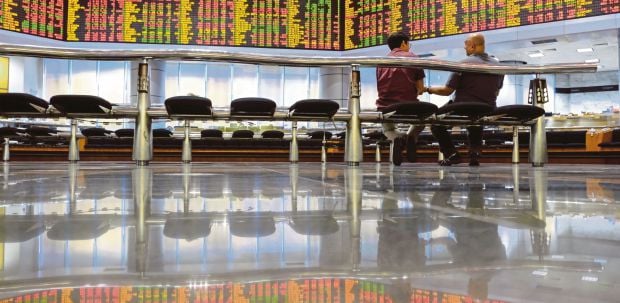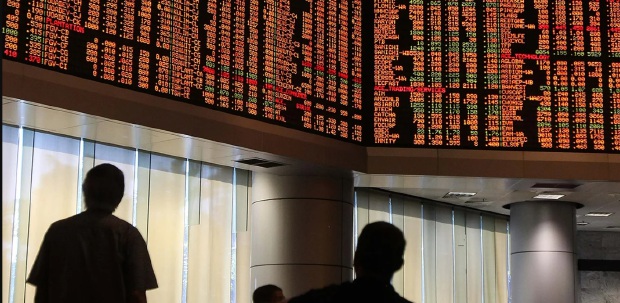KUALA LUMPUR: The ringgit and Bursa Malaysia performance continue to remains supported by China's reopening bounce, solid Chinese tourist and holiday data post-Lunar New Year, analysts said.
SPI Asset Management managing partner Stephen Innes said investors need to see consumer growth pick up in China, increasing Malaysia's exports to China before making material headway in Bursa's benchmark FBM KLCI to breach above 1,500.
"Still, the local bourse stuck in a bit of a wait-and-see mode, and it a similar story is unfolding, like the ringgit," he told the New Straits Times today.
On Monday, Bursa Malaysia maintained its positive tone at mid-morning as it rose by 0.26 per cent amidst investors' rising interest in small caps counters.
Benchmark FBM KLCI opened at 1,500.86 points, or 3.31 per cent higher from Friday's close of 1,497.55.
At lunch break, FBM KLCI advanced 0.16 of-a-point to 1,497.71 from Friday's close of 1,497.55. Turnover amounted to 2.55 billion units worth RM1.08 billion.
Rakuten Trade Sdn Bhd head of research Kenny Yee Shen Pin said it noticed funds are shifting into the smaller caps on improving daily volume.
"Meanwhile, we maintain our stance that the index to hover within the 1,495-1,505 range today with focus on the plantation stocks as the crude palm oil (CPO) futures rebounded past RM3,900 per tonne on weaker output,"
On the other hand, ringgit opened well but faded slightly as pre-Federal Open Market Committee (FOMC) uncertainly entered the picture.
The ringgit continued to tick higher for the seventh straight session ahead of the US Federal Reserve's (Fed) meeting on Jan 31 - Feb 1.
At 9 am, the local note rose to 4.2345/2395 against the greenback from Friday's close of 4.2410/2475.
At market closing, the FBM KLCI closed 1.84 point or 0.12 per cent higher to close at 1,499.39 points.
Innes said the ringgit movement has more to do given the markets have priced in Fed's interest rate cuts in the second half (H2) of 2023, and there is still a good chance the Fed holds the rates steady through 2023.
"The market is also focusing on China's Purchasing Managers Index (PMI) tomorrow for some confirmation bias that the outlook looks good, and the next leg lower on the ringgit will need to get driving my stronger growth as the reopening momentum is maturing a bit.
"There has been a lot of positive enthusiasm towards the ringgit, so we likely see a bit of risk reduction rather than any untoward as the positive momentum should continue through H1 2023," he added.
Kenanga Investment Bank Bhd noted that the main highlight for this week would be US inflation readings.
The market is currently expecting that the US core inflation may continue to trend lower to 5.7 per cent, a reading that could reinforce the Fed's pivot expectations, benefitting the ringgit.
"However, a hotter-than-expected reading may re-price the Fed's terminal rate higher and lift the greenback.
"The ringgit may also be influenced by domestic macroeconomic data namely the industrial production index (IPI), labour, retail sales and trade under pressure for the rest of the week.
Kenanga noted that the ringgit/US Dollar pair may trade above the 4.400-level this week, hovering around the 4.402–4.415 range, which indicates an upside pattern for the greenback.
"Nonetheless, a move towards 4.382 will reaffirm the ringgit's strength," the research firm noted.
Touching on fixed income, Kenanga noted that foreign demand for domestic bonds appears to be improving as global risk-aversion subsides, probably due to expectations of a smaller US rate hike and less hawkish Fed.
"However, we reckon that risk-off sentiment could return should the upcoming US FOMC meeting (January 31 – February 1) result in the Fed reiterating its hawkish stance and signalling several more rate hikes to come.
"Further along, we expect a more sustained recovery of foreign demand from the second quarter (Q2) of 2023 onwards, after major central banks complete their tightening cycles," the research firm further noted.
The Malaysian Government Securities (MGS) and Government Investment Issues (GII) yields mostly decreased last week, moving between -15.3 bps to 3.8 bps overall.
The 10-year MGS yield turned slightly higher to 3.75 per cent or up by 3.8 basis points (bps) after plummeting last week, while the 5-year MGS yield fell to 3.50 per cent or down 15.3 bps.
Yields mostly remained on a downtrend, amid the shorter workweek, as markets continued to digest Bank Negara Malaysia's (BNM) surprise rate decision.
However, local yields turned higher yesterday, likely in response to higher global bond yields, the research firm noted.






